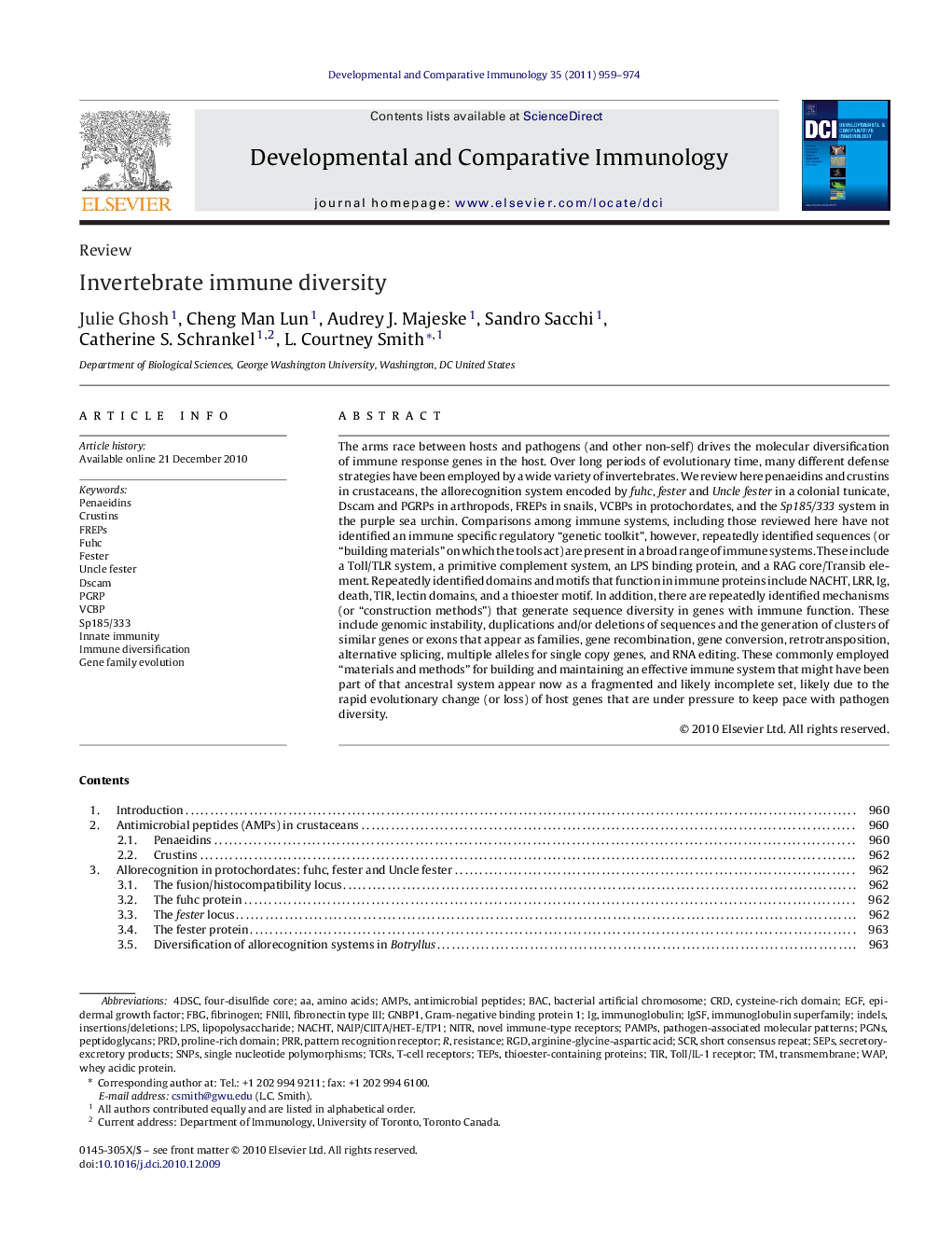| Article ID | Journal | Published Year | Pages | File Type |
|---|---|---|---|---|
| 2429718 | Developmental & Comparative Immunology | 2011 | 16 Pages |
The arms race between hosts and pathogens (and other non-self) drives the molecular diversification of immune response genes in the host. Over long periods of evolutionary time, many different defense strategies have been employed by a wide variety of invertebrates. We review here penaeidins and crustins in crustaceans, the allorecognition system encoded by fuhc, fester and Uncle fester in a colonial tunicate, Dscam and PGRPs in arthropods, FREPs in snails, VCBPs in protochordates, and the Sp185/333 system in the purple sea urchin. Comparisons among immune systems, including those reviewed here have not identified an immune specific regulatory “genetic toolkit”, however, repeatedly identified sequences (or “building materials” on which the tools act) are present in a broad range of immune systems. These include a Toll/TLR system, a primitive complement system, an LPS binding protein, and a RAG core/Transib element. Repeatedly identified domains and motifs that function in immune proteins include NACHT, LRR, Ig, death, TIR, lectin domains, and a thioester motif. In addition, there are repeatedly identified mechanisms (or “construction methods”) that generate sequence diversity in genes with immune function. These include genomic instability, duplications and/or deletions of sequences and the generation of clusters of similar genes or exons that appear as families, gene recombination, gene conversion, retrotransposition, alternative splicing, multiple alleles for single copy genes, and RNA editing. These commonly employed “materials and methods” for building and maintaining an effective immune system that might have been part of that ancestral system appear now as a fragmented and likely incomplete set, likely due to the rapid evolutionary change (or loss) of host genes that are under pressure to keep pace with pathogen diversity.
